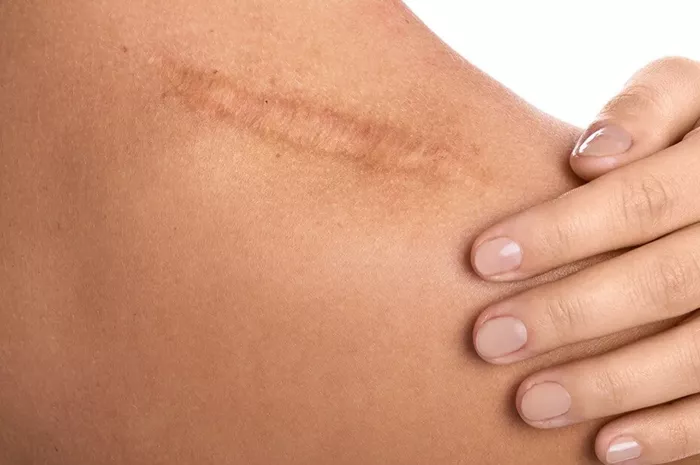Internal scar tissue, also known as adhesions, can develop following surgery, injury, or chronic inflammation. These adhesions can cause pain, restrict movement, and interfere with normal organ function. This comprehensive guide explores various methods to repair internal scar tissue, enhancing your quality of life.
Understanding Internal Scar Tissue
Internal scar tissue forms as part of the body’s natural healing process. When tissues are damaged, the body generates collagen fibers to repair the injury. In some cases, this process results in excessive or abnormal tissue growth, leading to adhesions. These adhesions can bind organs and tissues together, causing complications.
Common Causes of Internal Scar Tissue
Surgery: Abdominal and pelvic surgeries are common culprits.
Injury: Trauma to internal organs or muscles.
Inflammation: Conditions like endometriosis, Crohn’s disease, or pelvic inflammatory disease.
Symptoms of Internal Scar Tissue
Identifying the symptoms of internal scar tissue can aid in seeking timely medical intervention.
Common Symptoms
Pain: Persistent pain in the affected area.
Restricted Movement: Difficulty moving certain parts of the body.
Digestive Issues: Bloating, constipation, or bowel obstruction.
Infertility: In cases where adhesions affect reproductive organs.
Diagnosis of Internal Scar Tissue
A proper diagnosis is crucial for effective treatment. Physicians employ various diagnostic tools to identify internal scar tissue.
Diagnostic Methods
Physical Examination: Initial assessment based on symptoms.
Imaging Techniques: Ultrasound, MRI, or CT scans.
Laparoscopy: A minimally invasive procedure to view internal organs directly.
Non-Surgical Methods to Repair Internal Scar Tissue
Several non-surgical approaches can help manage and repair internal scar tissue, reducing pain and improving function.
Physical Therapy
Physical therapy involves specific exercises and manual techniques to stretch and mobilize scar tissue.
Techniques Used
Myofascial Release: Gentle pressure applied to the affected area.
Stretching Exercises: Targeted exercises to improve flexibility.
Strengthening Exercises: Building muscle strength to support affected areas.
Massage Therapy
Massage therapy can break down scar tissue and improve circulation, promoting healing.
Types of Massage
Deep Tissue Massage: Focuses on deeper layers of muscles and connective tissue.
Swedish Massage: Uses long strokes and kneading to relax muscles.
Heat and Cold Therapy
Alternating heat and cold can reduce pain and inflammation, promoting scar tissue healing.
Application Methods
Heat Therapy: Heating pads or warm baths.
Cold Therapy: Ice packs or cold compresses.
Anti-inflammatory Medications
Non-steroidal anti-inflammatory drugs (NSAIDs) can help reduce pain and inflammation associated with scar tissue.
Common NSAIDs
Ibuprofen: Effective for mild to moderate pain.
Aspirin: Reduces inflammation and pain.
Supplements
Certain supplements can support the body’s healing process and reduce scar tissue formation.
Effective Supplements
Vitamin C: Promotes collagen production and tissue repair.
Vitamin E: Antioxidant that supports skin and tissue health.
Zinc: Essential for wound healing and immune function.
Surgical Methods to Repair Internal Scar Tissue
In severe cases, surgery may be necessary to remove or reduce internal scar tissue.
Types of Surgery
Laparoscopic Surgery: Minimally invasive procedure to remove adhesions.
Open Surgery: More extensive surgery for severe cases.
Risks and Considerations
Risk of Recurrence: Scar tissue can reform after surgery.
Complications: Infection, bleeding, or damage to nearby organs.
See Also: What is the Most Frequent Approach to Scar Revision?
Lifestyle Changes to Support Healing
Adopting certain lifestyle changes can enhance the body’s ability to repair internal scar tissue.
Healthy Diet
A balanced diet rich in nutrients supports overall healing.
Key Nutrients
Protein: Essential for tissue repair.
Antioxidants: Found in fruits and vegetables, help reduce inflammation.
Omega-3 Fatty Acids: Reduce inflammation and promote healing.
Regular Exercise
Exercise improves circulation and flexibility, aiding in scar tissue repair.
Recommended Activities
Aerobic Exercise: Walking, swimming, or cycling.
Strength Training: Building muscle strength to support affected areas.
Flexibility Exercises: Yoga or stretching routines.
Stress Management
Managing stress can improve overall health and support the healing process.
Effective Techniques
Mindfulness Meditation: Reduces stress and improves mental clarity.
Deep Breathing Exercises: Calms the nervous system and reduces tension.
Alternative Therapies
Alternative therapies can complement traditional treatments for internal scar tissue.
Acupuncture
Acupuncture involves inserting thin needles into specific points on the body to reduce pain and promote healing.
Benefits
Pain Relief: Reduces chronic pain associated with adhesions.
Improved Circulation: Enhances blood flow to affected areas.
Herbal Remedies
Certain herbs have anti-inflammatory properties that can aid in scar tissue repair.
Common Herbs
Turmeric: Contains curcumin, which reduces inflammation.
Aloe Vera: Promotes healing and reduces inflammation.
Preventing Internal Scar Tissue
While it’s not always possible to prevent internal scar tissue, certain measures can reduce the risk.
Post-Surgical Care
Proper post-surgical care can minimize the formation of adhesions.
Steps to Take
Follow Doctor’s Instructions: Adhere to prescribed guidelines.
Stay Active: Gentle movement can prevent stiffness and adhesion formation.
Maintain Hydration: Adequate fluid intake supports healing.
Managing Chronic Conditions
Effective management of chronic conditions can reduce the risk of scar tissue formation.
Key Strategies
Medication Adherence: Take prescribed medications as directed.
Regular Check-ups: Monitor and manage underlying conditions.
Healthy Lifestyle: Diet, exercise, and stress management.
Conclusion
Repairing internal scar tissue involves a multifaceted approach, combining medical treatments, lifestyle changes, and alternative therapies. By understanding the causes, symptoms, and treatment options, individuals can take proactive steps to manage and repair internal scar tissue, improving their quality of life. Always consult with a healthcare professional before starting any treatment plan to ensure it is tailored to your specific needs.
[inline_related_posts title=”You Might Be Interested In” title_align=”left” style=”list” number=”6″ align=”none” ids=”10755,10682,10601″ by=”categories” orderby=”rand” order=”DESC” hide_thumb=”no” thumb_right=”no” views=”no” date=”yes” grid_columns=”2″ post_type=”” tax=””]

































